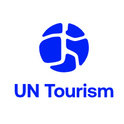Testing Times for International Tourism | UNWTO Reports
According to the June edition of the UNWTO World Tourism Barometer international tourism declined by 8% between January and April compared to the same period last year. Destinations worldwide recorded a total of 247 million international tourist arrivals in those four months, down from 269 million in 2008. Given the changes in the outlook UNWTO has revised its forecast for the full year 2009. Taking account of the results for the first four months of the year and the current market conditions, international tourism is now forecast to decrease by between -6% and -4% in 2009, as the pace of decline is expected to ease during the remainder of 2009.
Regional panorama
With the exception of Africa, all regions recorded a decrease in arrivals for the first four months of 2009:
- In Europe (-10%), the impact was high as the majority of source markets have struggled with recession since the end of 2008. Moreover, outbound tourism of the second largest market (UK) has endured the depreciation of the pound sterling.
- Overall, the Americas (-5%) have suffered due to the slowdown of the USA both as a source market and a destination. Still, South America was the only sub-region outside of Africa to buck the general downward trend, registering +0.2%.
- For Asia and the Pacific (-6%) the decline in demand has been faster than expected and is particularly severe when compared to results from recent years.
- Although the decline in the Middle East is significant (-18%), complete data is not available and arrivals are still expected to be well above the 2007 levels.
- The positive results in Africa (+3%) reflect the strength of North African destinations around the Mediterranean and the recovery of Kenya as one of leading Sub-Saharan destinations.
Challenging conditions
The negative trend in international tourism that emerged during the second half of 2008 intensified in 2009. In view of the rapidly deteriorating global economic situation, economic growth prospects have repeatedly been adjusted downwards over the past six months. While at the time of the previous UNWTO forecast in January, the International Monetary Fund was still counting on positive growth over 2% for the world economy in 2009, a decline of 1.3% is now expected.
Tourism is seriously impacted, given the sharp reduction in business activity, decreasing disposable income and associated increased unemployment, particularly in key tourism source markets. Exchange rate fluctuations have added to the general uncertainty and business and consumer confidence have yet to recover. Furthermore, the level of advanced bookings, coupled with the reduction in airline capacity, make recovery before 2010 difficult.
There is additional uncertainty regarding the future of the influenza A(H1N1) virus and its effect on demand in the short to medium term. It should be stressed, however, that at the moment no restrictions on international travel are recommended by the World Health Organization (WHO).
Taking account of the results for the first four months of the year and the current conditions, worldwide growth in international tourist arrivals is expected to end up between -6% and -4% for the full year. The pace of decline is expected to soften in the remainder of the year, with the months May-August projected at between -6% and -4%, and September-December between -5% and -3%.
2008 receipts follow the pace of arrivals
International tourism receipts rose by 1.8% in 2008 (in real terms), virtually equalling growth in international tourist arrivals (+1.9% to 922 million). UNWTO estimates that worldwide receipts from international tourism reached US$ 944 billion last year, up from US$ 857 billion in 2007. Last year’s substantial increase in absolute terms is to some degree a reflection of the weakening of the US dollar, which boosted receipts expressed in the currency. In euro terms, receipts increased to 642 billion, from 625 billion in 2007.
In 2008, there were only slight changes in the rankings of both international tourist arrivals and receipts. In arrivals, France remains the world’s major tourism destination (79 million tourists) and in receipts third. The USA is first in receipts and now second in arrivals after regaining the position it lost to Spain after the events of 11 September 2001. Spain ranks third in arrivals but has firmly maintained its position as the second worldwide earner and the first in Europe. China, fourth in arrivals, is still fifth in terms of receipts, while the reverse is true for Italy.
Travel & Tourism can be part of the solution
Against a progressively more difficult environment, UNWTO has been increasing its efforts to provide the sector, and its Members in particular, with the necessary support to face these challenging times under the Roadmap for Recovery.
Travel and tourism can support short-term stimulus actions, namely those aimed at creating and sustaining jobs, as well as the long-term transformation to a green economy.
Tourism is one of the largest employment sectors in most countries and a fast entry vehicle into the workforce for young people and women in urban and rural communities, directly, or through its strong multiplier effect on related services, manufacturing or agriculture.
Actions are needed to boost trade promotion, simplify regulation, build infrastructure and rationalise taxes, which in turn incite companies to invest, innovate and stimulate demand. This kind of public-private sector collaboration should be strongly advanced within and between all states – it will help build resilience and recovery across economies.
UN Tourism Communications Department
+34 91 567 8100
UN Tourism
